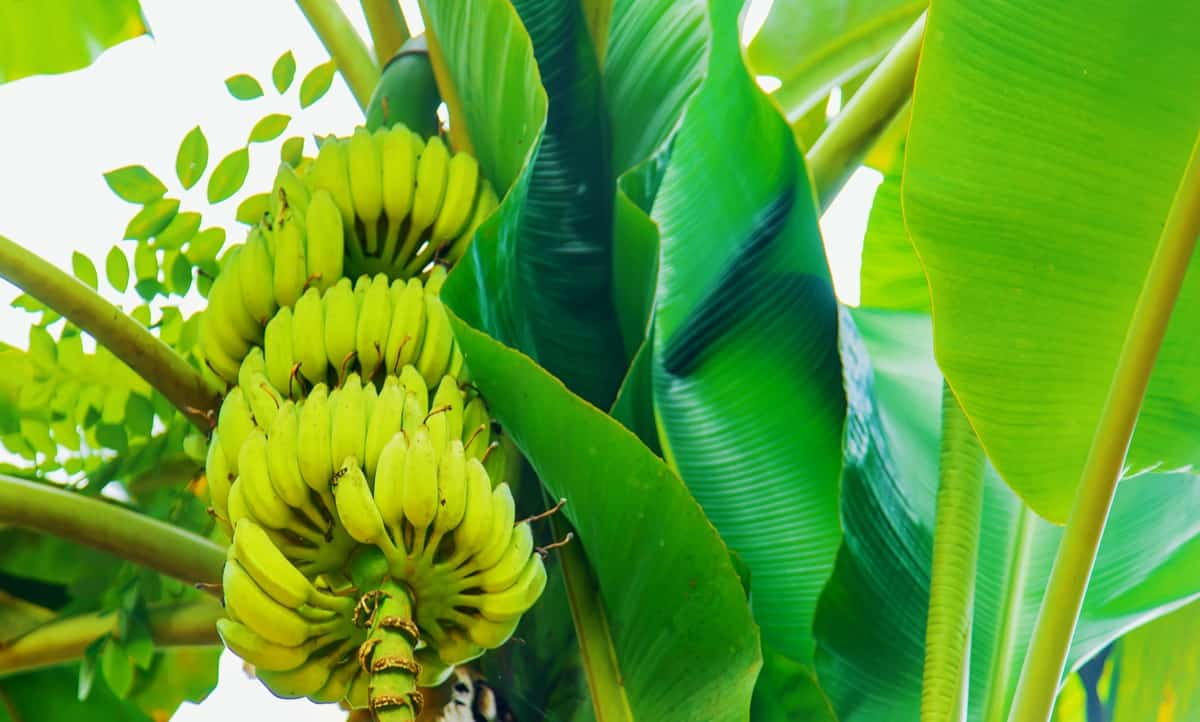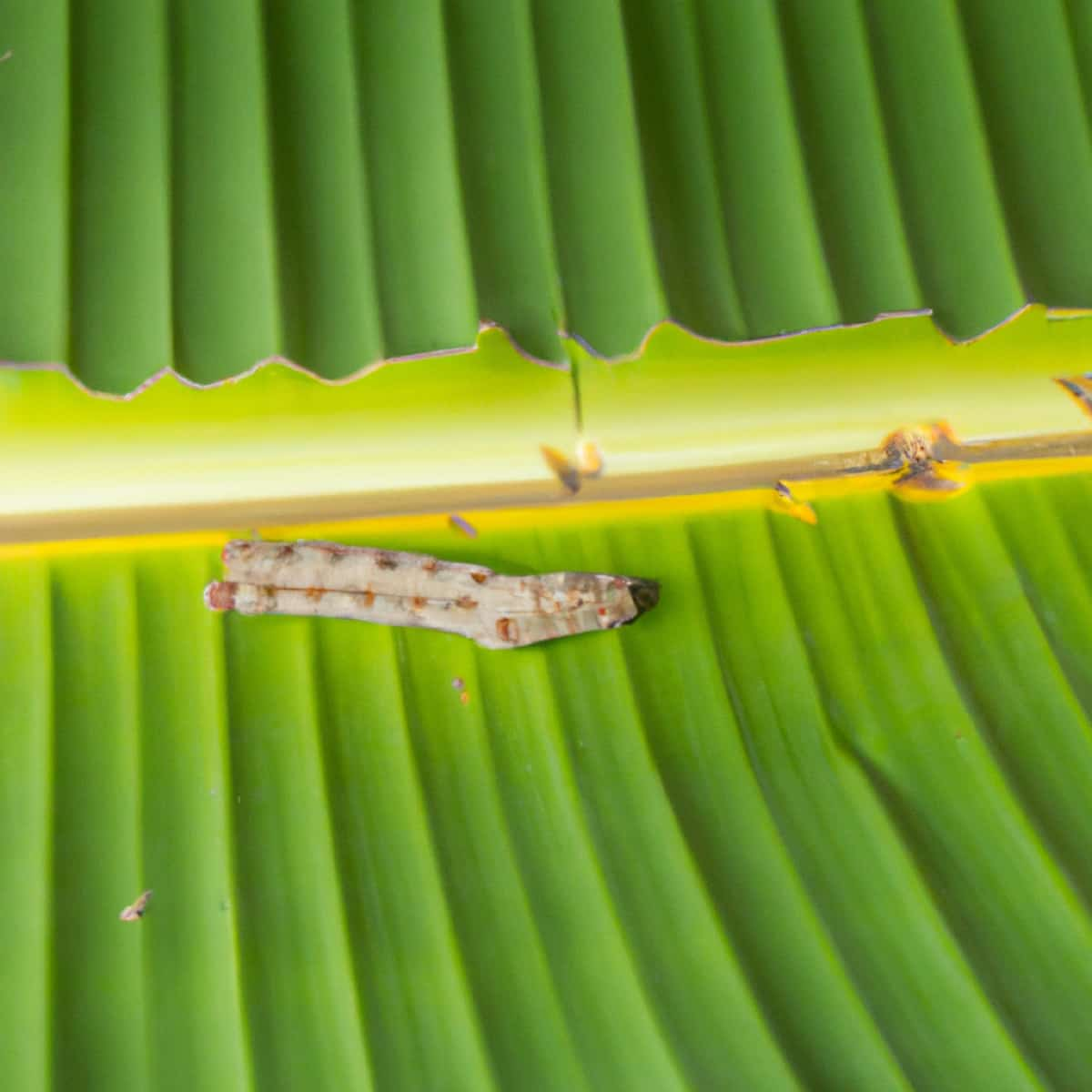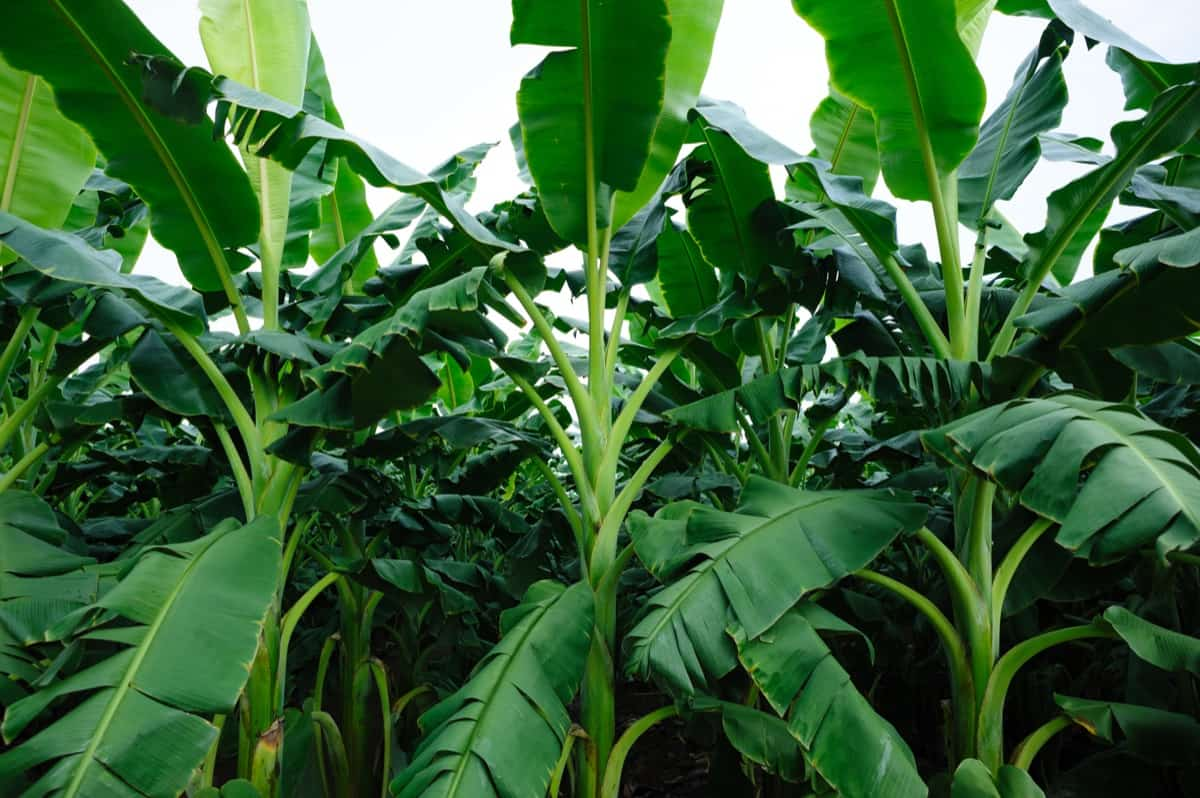The Banana Leaf Feeder Pest, Pericallia ricini, belonging to the Family Arctiidae of the Order Lepidoptera, is a serious pest of banana crops that feeds on the leaves of banana plants, causing significant yield losses and reducing the quality of the fruit. This moth species is known for its destructive feeding habits on the banana plants, which can cause significant damage to the crop and reduce its yield.

Infestations of the pest can be particularly damaging to banana crops, as they can significantly reduce plant vigor and fruit production. Proper management and control are crucial to maintaining the health and productivity of these important food crops. To effectively manage this pest, it is important to understand its life cycle, its preferred habitats, and the best methods for controlling it. This article will provide an overview and discussion of the Banana Leaf Feeder Pest in Banana crops, including its symptoms, identification techniques, and control.
Banana Leaf Feeder Pest Management
Life Cycle of Banana Leaf Feeder Pest in Banana Crop
The lifecycle begins when the female adult moth lays eggs in groups of 50-100 on the underside of banana leaves. The eggs hatch in about 3-4 days, depending on the temperature and humidity. Once the eggs hatch, the larvae emerge and feed on the banana leaves. The larvae feed on the banana leaves for about 2-3 weeks before entering the next stage. After the larval stage, the Pericallia ricini enters the pupal stage.
The pupa is a non-feeding stage where the insect undergoes metamorphosis and becomes an adult. The pupal stage lasts for about 7-10 days. The final stage of the Pericallia ricini lifecycle is the adult stage. The adult emerges from the pupa and begins to mate and lay eggs. The adult female can lay up to 500 eggs during her lifetime, lasting 10-15 days. The lifecycle can be completed in at least 30 days in warmer and humid conditions. The lifecycle can take up to 60 days in cooler and drier conditions.
Occurrence of Banana Leaf Feeder Pest in Banana Crop
- Location of Banana Leaf Feeder pest: This pest infests Banana crops in India, Africa, Sri Lanka, China, Thailand, Vietnam, Indonesia, the United States, Mexico, Brazil, Colombia, Ecuador, the Philippines, and Australia.
- Host range: The Banana Leaf Feeder pest infects crops like Banana, Plantain, Cassava, Sweet Potato, Maize, and Tomato.
Factors Favoring the Population Increase of Banana Leaf Feeder Pest in Banana Crop
- The pest thrives in warm and humid weather conditions. These conditions provide ideal breeding and feeding grounds for the pest.
- Monoculture farming, where large areas are planted with a single crop, can create ideal conditions for the spread of the pest. It can quickly move from plant to plant, infesting large areas of crops.
- Poor sanitation practices, such as leaving crop debris on the ground, can create ideal breeding and feeding grounds. The pest can lay eggs in the debris, and the larvae feed on the decaying plant material.
- Overusing pesticides can create a selection pressure that leads to developing pesticide-resistant pest strains.
- The absence of natural predators in the field can allow its population to grow unchecked.
Identification of Banana Leaf Feeder Pest in Banana Crop
- Egg: The eggs are small, round, and white.
- Larva: The larvae are brownish-yellow, with black stripes and spines on their bodies. They grow rapidly and can reach a length of up to 5 cm.
- Pupa: The pupa is initially green in color but turns brown as it matures.
- Adult: The adult moth has a wingspan of 4-5 cm and is characterized by its light brown color, darker markings on the wings, and a distinctive pattern of white and black spots.
Damage Symptoms of Banana Leaf Feeder Pest in Banana Crop
- They feed on the leaves of banana plants, causing characteristic damage in the form of irregular holes and patches of skeletonized tissue.
- The caterpillar scraps the chlorophyll from the leaf on the ventral surface, which causes reduced photosynthetic activity, stunted growth of plants, reduced yields, and eventually death.
- The caterpillars vigorously feed and breed at night on the leaves of the plants.
- The pest can also cause chlorosis and wilting of the banana leaves.
Percentage of Yield Loss in Bananas Due to Banana Leaf Feeder Pest
- In India, the yield losses due to Banana Leaf Feeder pests are 50%. In Thailand, the percentage of yield loss is 10-50%. In Thailand, it is 60%. In Vietnam, the losses are 30-80%. In Sri Lanka, the losses are 70%. In Indonesia, the losses are 30-70%. In Africa, it is 20-80%. In the United States, it is 5-15%. In Mexico, it is 20-50%. In Brazil, it is 10-70%. In China, it is 20-40%.
- In Colombia, the losses are 20-50%. In Ecuador, it is 20-70%. In Australia, it is 5-20%. In the Philippines, the yield losses are 40%. The Economic Threshold Level (ETL) for the Banana Leaf Feeder pest is 5-10 larvae per plant.
In case you missed it: Banana Rust Thrips Pest Management: Symptoms, Treatment, Chemical, Biological, and Organic Control

Cultural Control of Banana Leaf Feeder Pest in Banana Crop
- The rotation of banana crops with other crops, such as legumes or vegetables, breaks the pest’s life cycle and reduces its population.
- Remove and destroy infested leaves, prune and remove suckers and dead leaves, collect & destroy eggs and caterpillars, and keep the area around the crop free of weeds and debris.
- Use a burning torch to kill the caterpillars.
- Proper pruning and thinning of banana plants can improve air circulation and reduce the humidity in the canopy, which can help reduce pest infestations.
- Marigold is the trap crop plant that is attractive to the pest and is planted to lure them away from the main crop.
- Use light traps to attract and kill adult pests.
Biological Control of Banana Leaf Feeder Pest in Banana Crop
- Predatory insects, such as ants, spiders, and ground beetles, are natural enemies that feed on the pest, reducing its population and preventing its spread.
- Parasitoids, such as tachinid flies, braconid wasps, and chalcid wasps, lay their eggs inside the host insect, hatching and feeding on the host until it dies.
- The entomo-pathogenic fungi Beauveria bassiana and Metarhizium anisopliae infect and kill the pest.
- The entomo-pathogenic nematodes Steinernema carpocapsae and Heterorhabditis indica are small worms that infect and kill the pest.
- The microbial pesticide Bacillus thuringiensis is toxic to the pest.
Chemical Control of Banana Leaf Feeder Pest in Banana Crop
- Spray insecticides on the crops like Endosulfan, Carbaryl, Imidacloprid, Thiamethoxam, Deltamethrin, Cypermethrin, Chlorpyriphos, or Quinalphos on the plants to control the pest.
- Dust the insecticides Parathion, Malathion, or Carbaryl on the infested crops to control young caterpillars.
Organic Control of Banana Leaf Feeder Pest in Banana Crop
- Plant extracts from neem, lantana, garlic, cinnamon, ginger, turmeric, and chili can be applied to manage the infestation.
- Biopesticides like spinosad, azadirachtin, pyrethrins, rotenone, pyrethrum, sabadilla, and kaolin are toxic to the pest.
Preventive Measures for Control of Banana Leaf Feeder Pest in Banana Crop
- Planting disease-free and pest-free planting material can prevent pest incidence.
- Proper fertilization and irrigation can promote healthy plant growth and improve the plant’s resistance to pests.
- Monitor the crops regularly using pheromone traps to identify pest infestation in the early stages to keep it under control.
In case you missed it: Banana Hard Scale Pest Management: Symptoms, Treatment, Chemical, Biological, and Organic Control

Conclusion
The Banana Leaf Feeder Pest, Pericallia ricini, poses a significant threat to banana crops worldwide, causing damage and yield losses. However, Integrated Pest Management strategies can be effectively implemented to manage the pest and reduce their impact on banana crops. Effective IPM strategies can help to reduce the pest population, prevent the incidence and spread of the pest, and ultimately lead to long-term sustainable and profitable banana production.
- Beneficial Insects in Pest Management
- Natural Solutions for Pest Control in Flower Gardens
- Types of Fungicides Used in Agriculture
- Common Issues in the Fruit Development Stage of Pomegranate Farming
- Fruit Development Issues in Papaya: Easy Solutions and Treatment
- Soil-Borne Diseases and How to Protect Your Plants
- Practices to Prevent Disease Spread in the Garden
- From Wilted to Thriving: How to Treat Root Rot Naturally in Houseplants
- Natural Remedies to Cure Brown Spots on Fig Tree Leaves